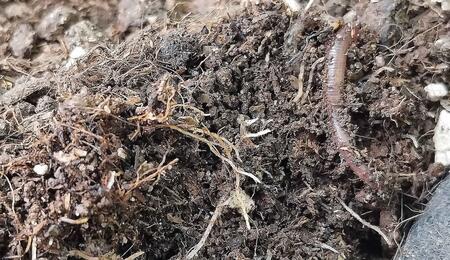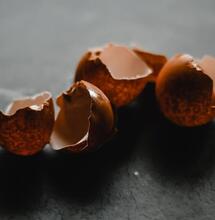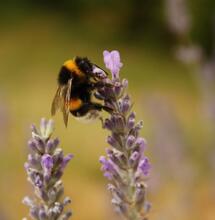The Benefits of Using Worm Castings When Growing Organic Cannabis

When growing organic cannabis, growers typically buy a bag of soil and combine it with their organic liquid nutrients. Did you know that worms produce a nutrient-rich waste product known as worm castings, which are incredibly beneficial for growing cannabis?
In this article, I will explain all you need to know about worm castings, the benefits, nutritional value, how to apply them, covering cold water extracts, aerated worm tea, starting your worm bin at home, as well as common mistakes to avoid when using worm castings.
What Are Worm Castings?
Have you ever looked closely at your organic growing medium and noticed small or large worms crawling around? Worms are found naturally growing in soil and spend their entire lives inside. When a worm eats organic matter, it produces a waste product rich in beneficial microorganisms, bacteria, and a slow-release nutrient that cannabis plants love.
The Benefits of Using Worm Castings for Growing
- The soil structure will improve.
- Worm castings are rich in slow-release cannabis nutrients.
- Water retention is enhanced when worm castings are used.
- Worms will aerate the soil as they crawl through.
- Worm castings are full of beneficial microorganisms that plants need.
- You can make your own supply of worm castings at home.
- A bag of fresh worm castings is not expensive to buy.
- A grower can make a liquid tonic from worm castings.
- An excellent slow-release nutrient for seedlings.
How to Apply Worm Castings to Your Grow
There are many ways to use worm castings when growing cannabis, ranging from the seedling stage all the way until harvest. There are three ways an organic grower can apply this natural fertiliser to their garden, which are covered below.
Mixing It With Your Growing Medium
If you are a fan of creating your own custom organic soil blends, worm castings are likely to be a key ingredient. One of the easiest ways to use freshly produced worm castings is to simply mix them in with soil, compost or coco coir, as a potting mix for germinating seeds, or newly rooted clones.
Applying a Top Dressing Every 2 Weeks
The second way to add worm castings to your crop is to apply a top dressing every 10-14 days. Doing so will ensure that there is a centimetre-thick layer at the surface of the growing medium. Top dressing ensures that the plants are consistently given a microorganism-rich, slow-release nutrient that contains nitrogen, phosphorus and potassium as well as some trace elements, and will keep plant health and vitality optimal through the different growing cycles.
A Liquid Feed of Worm Castings
If you prefer to use a liquid nutrient when feeding your organic growing medium, then a liquid worm castings feed will be ideal. You can either make an aerated worm tea or produce a cold water extract, both of which are described below.
Aerated Worm Tea and Cold Water Extracts
The fun part about being an organic grower is to become hands-on with your nutrients, and one of the best ways is to produce a liquid feed. There are two methods to choose from, both of which are easy to do and highly beneficial for supercharging soil.
Aerated Worm Tea
All you need to produce an aerated worm tea (organic compost tea) is a bucket, an air pump, an air stone and a source of freshly produced worm castings. Below is a step-by-step guide on the process involved.
Step 1: Using a 10-litre plastic bucket, fill it with unchlorinated water.
Step 2: Insert your air stone at the base of the bucket.
Step 3: Add a teaspoon of unsulphured blackstrap molasses into the water and stir.
Step 4: Fill a micron filtered bag with worm castings and place it inside the water.
Step 5: Switch on the air pump and allow the air stone to produce dissolved oxygen.
Step 6: After 24 hours, turn off the pump and use the tea directly on the soil.
Producing Cold Water Extracts
When making a cold water extract, you will not need to use an air pump; instead, you will simply need a bucket of water and a source of worm castings. Below is a step-by-step guide.
Step 1: Fill a 10-litre bucket up with unchlorinated water.
Step 2: Fill a micron-filtered bag with fresh worm castings.
Step 3: Suspend the bag over the bucket and into the water using a bamboo cane.
Step 4: Allow the suspended micron bag to sit in the water for 24 hours.
Step 5: Feed your plants with the worm tea and apply it to the top of the soil.
Start Your Own Worm Bin at Home
I have always bought worm castings from my local garden centre or grow shop. However, you can always invest in a worm bin and start producing your own worm castings at home. Setting up a worm bin at home is a fun way to create your own nutrients and recycle food scraps and other organic materials. Below is a list of what you can feed your worm bin and start vermicomposting.
- Fruit peels
- Vegetable peels
- Crushed egg shells
- Tea bags
- Coffee grounds
Mistakes to Avoid When Using Worm Castings
If you are reading this article and are thinking you want to give worm castings a try on your next grow, then below are a few common mistakes to be aware of.
Using old worm castings from a shop
Buying worm castings in sacks from the garden centre or grow shop can often be practical and easy to source. A common mistake to avoid is purchasing old sacks that have been sitting around for months, have a crushed and flat appearance, or have been neglected and left in the sun for long periods. Worm castings in this condition often contain no worms. They will not have as many cannabis nutrients or beneficial microorganisms compared to a fresh batch.
Feeding worms the wrong foods
When feeding your worm bin household scraps, you mustn't feed your worms certain foods. A common mistake to avoid is giving the worms meat scraps, fish scraps, cheese, yoghurt, dairy products, citrus, spices or oily foods. Only provide the worms with organic products such as fruit, vegetables, tea leaves and coffee grounds
Avoid bad-smelling worm castings
If you notice that the worm castings you have bought from a shop, or freshly harvested from a worm bin, have a bad smell, then avoid using them. A foul smell will mean there are anaerobic microbes present. These harmful microbes thrive in low-oxygen and acidic environments, turning an organic growing medium into a breeding ground for disease and pathogens.
My Final Thoughts on Using Worm Castings
Working with fresh, high-quality worm castings is exceptionally beneficial for enriching soil and providing a well-balanced diet for your cannabis plants. Worm castings will not burn your cannabis plants and are a fantastic way to give your seedlings, freshly rooted clones or autoflowering plants the best start in life. Beware of low-quality worm castings that do not contain worms, and avoid using any that include a bad, rotting smell.
Good luck experiencing worm castings and growing lush, green, and healthy plants from start to finish. Why not take your organic gardening to the next level and invest in a worm bin?







